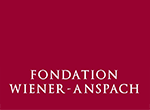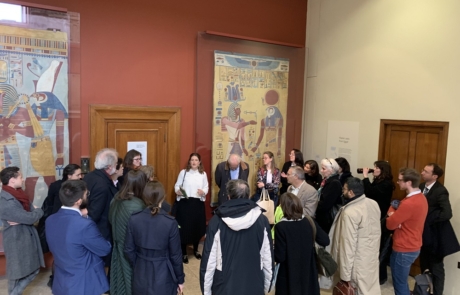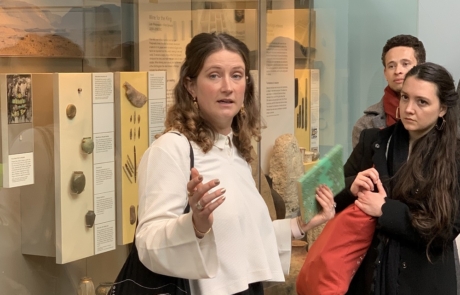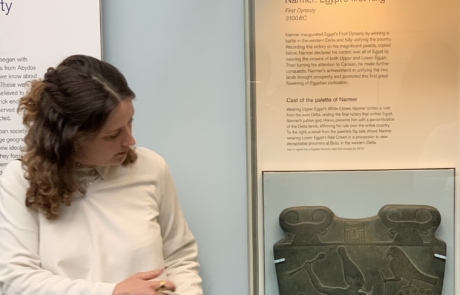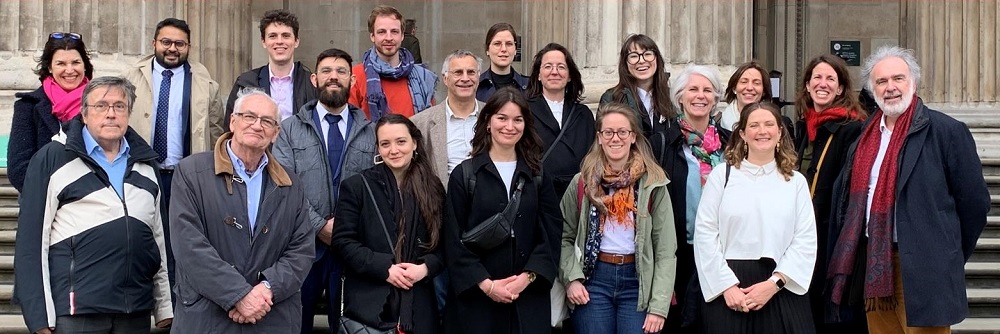
On April 21, before the reception at the Residence of His Excellency Bruno van der Pluijm, Belgian Ambassador to the United Kingdom, the Foundation’s Alumni Network organised a visit to the Egyptian galleries of the British Museum. We had the pleasure to be guided by Amélie Deblauwe, a Wiener-Anspach Alumna who studied Egyptology and is now Senior Digitisation Technician at the University of Cambridge, where she photographs and digitises ancient texts.
As Amélie reminded us, 2022 marked the bicentenary of the deciphering of hieroglyphics by Jean-François Champollion. The visit offered us the opportunity to analyze several examples of their use, including the famous Rosetta Stone.
“Hieroglyphic writing combined phonograms and ideograms with great flexibility, making it particularly difficult to decipher,” Amélie explains. “During a remarkable existence of more than 3500 years, this flexibility allowed hieroglyphs (called ‘divine word’ in Egyptian) to be used for religious, political and everyday needs. Engraved deep into stone temples, they allowed the pharaoh to assert his dominance, his legitimacy, and to associate himself intimately with the gods. Sketched in hieratic, cursive form, they provided a roadmap in papyrus scrolls for the journey into the afterlife. Texts painted on the walls of richly decorated noble tombs invited their visitors to recall the achievements of the deceased, and to pronounce his or her name in order to keep the memory alive. The ancient Egyptians believed deeply in the power and creative capacity of words. It is therefore not surprising that the last known hieroglyphic inscription was a votive graffito left by a priest in the hope that it would last ‘for eternity’”.
The Foundation warmly thanks Amélie for this fascinating visit and for the explanations provided for our website.


